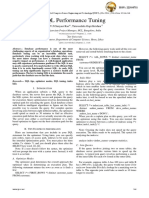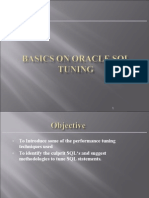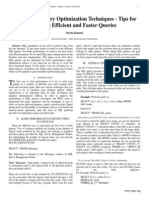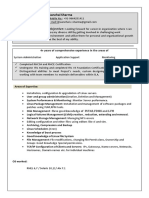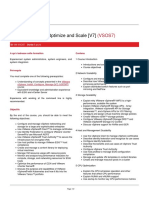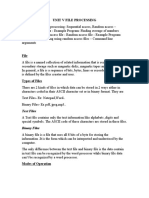0% found this document useful (0 votes)
67 views16 pagesSQL Query Optimization Guide
This document discusses various techniques for writing queries for optimal performance in SQL Server. It covers topics like EXISTS vs IN vs joins, avoiding SELECT *, order of tables in joins, parameter sniffing, dynamic queries, scalar UDFs, views and more. The key message is that the SQL Server optimizer aims for the most efficient execution plan, though there are special cases, and query writing best practices can improve performance in many situations.
Uploaded by
Orcun IyigunCopyright
© © All Rights Reserved
We take content rights seriously. If you suspect this is your content, claim it here.
Available Formats
Download as PDF, TXT or read online on Scribd
0% found this document useful (0 votes)
67 views16 pagesSQL Query Optimization Guide
This document discusses various techniques for writing queries for optimal performance in SQL Server. It covers topics like EXISTS vs IN vs joins, avoiding SELECT *, order of tables in joins, parameter sniffing, dynamic queries, scalar UDFs, views and more. The key message is that the SQL Server optimizer aims for the most efficient execution plan, though there are special cases, and query writing best practices can improve performance in many situations.
Uploaded by
Orcun IyigunCopyright
© © All Rights Reserved
We take content rights seriously. If you suspect this is your content, claim it here.
Available Formats
Download as PDF, TXT or read online on Scribd
/ 16







